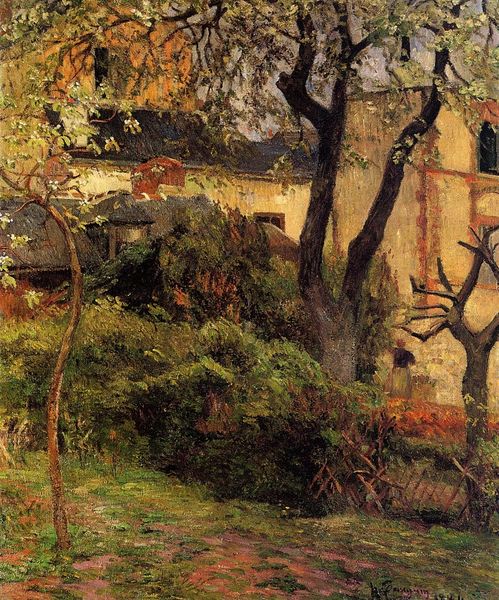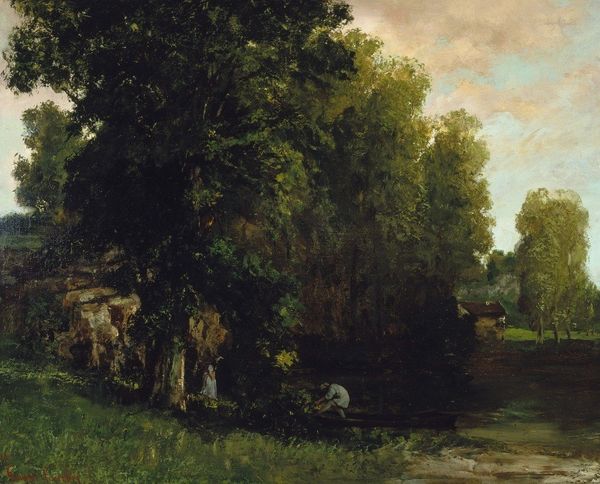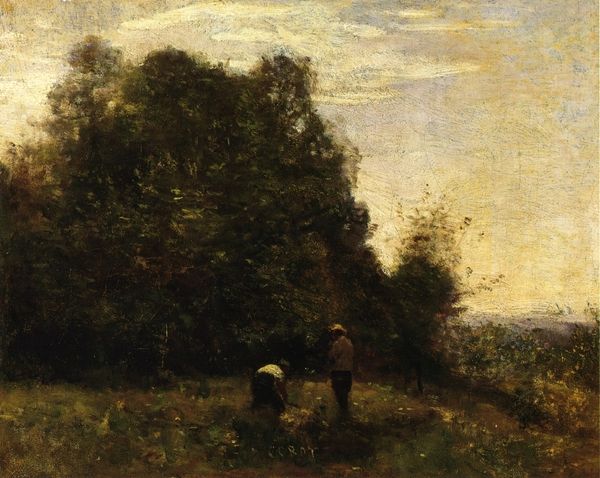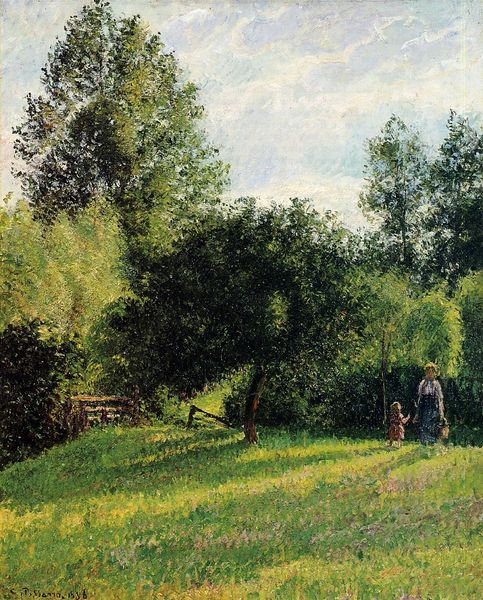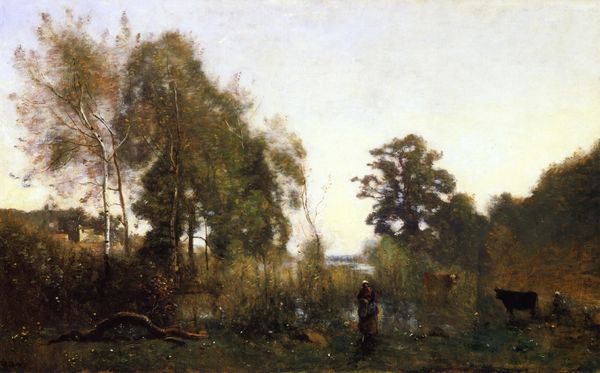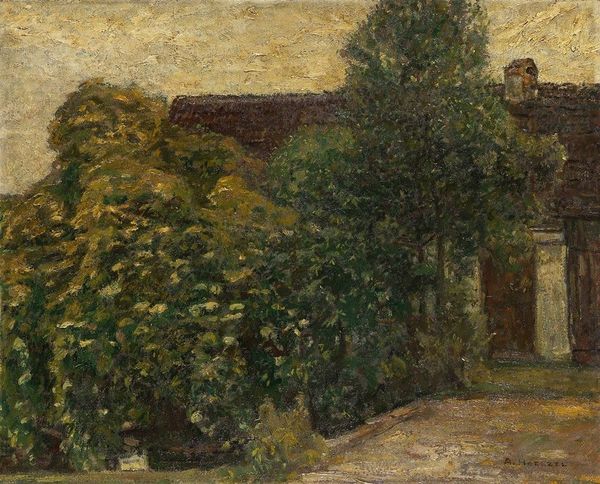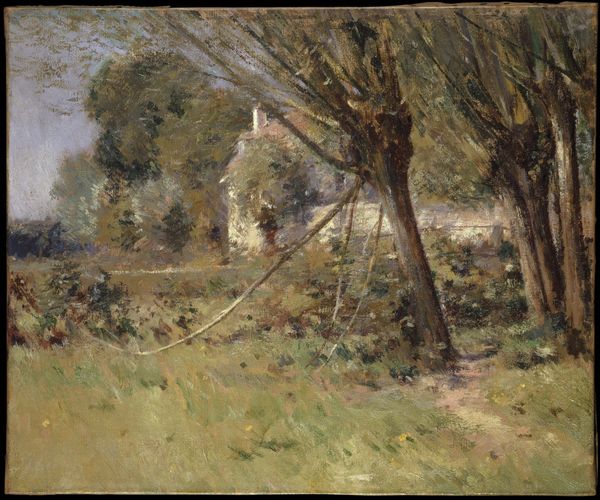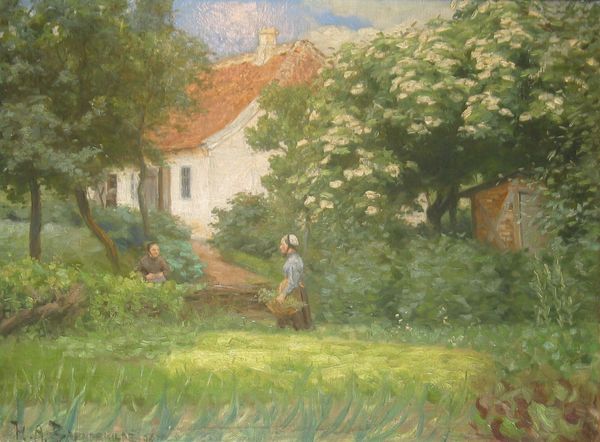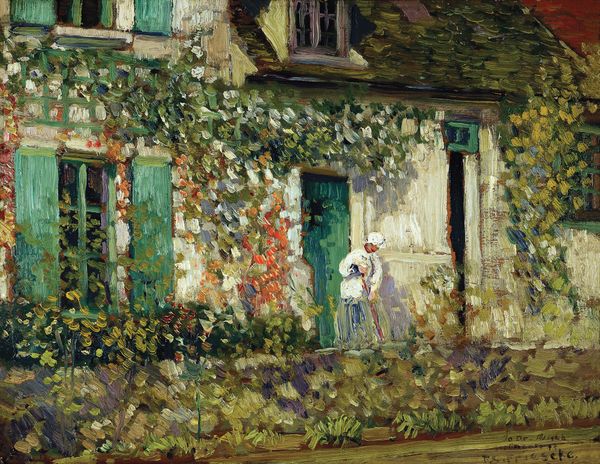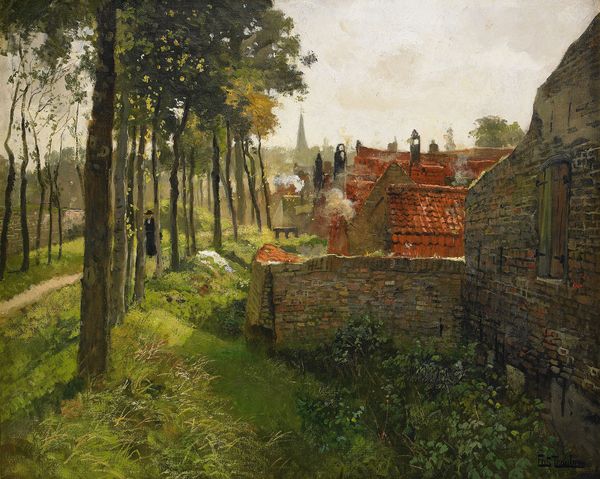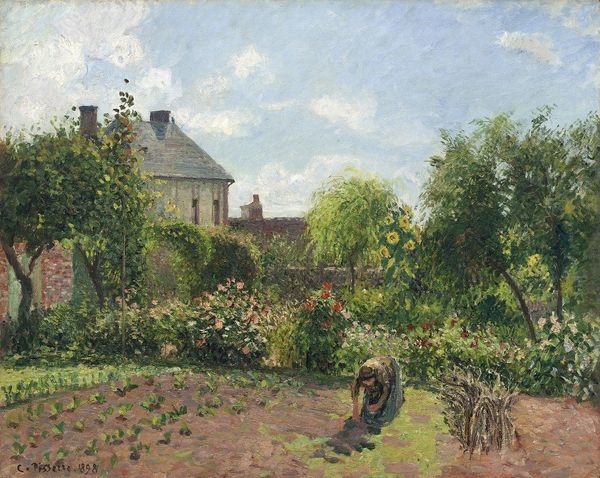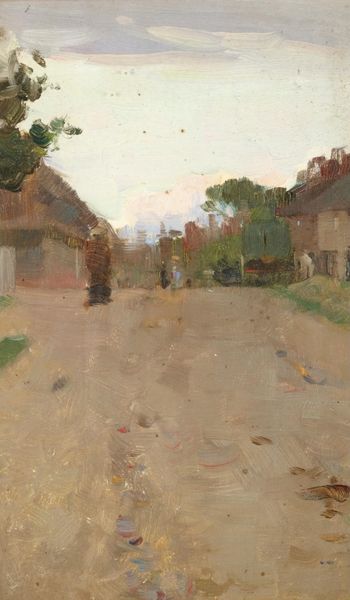
painting, plein-air, oil-paint
#
portrait
#
tree
#
impressionistic
#
painting
#
impressionism
#
impressionist painting style
#
plein-air
#
oil-paint
#
landscape
#
house
#
impressionist landscape
#
oil painting
#
cityscape
#
building
Copyright: Public domain
Curator: Childe Hassam’s “The Old Fairbanks House, Dedham, Massachusetts,” created in 1884, offers us a glimpse into a time and place rich with cultural memory. Editor: My first impression is one of earthy, almost rustic simplicity. It's dark, muted, and immediately makes me consider the types of materials used, the paint, the brushstrokes... Curator: Indeed. The Fairbanks House, a symbol of early colonial life, stands almost as a guardian of those values. Note the way the house almost blends with the trees, rooted and organic in its presence. This composition invokes something ancient. Editor: Exactly, it’s the layering of history itself rendered in layers of paint. You can almost feel the texture of the house's weathered clapboard and rough-hewn timbers; what was the process for building it in that era, how were the materials sourced and paid for? Curator: Consider also the figure of the woman walking towards the house. In her unassuming presence, she is not just a figure within a landscape but represents continuity. The house endures, and so does the human spirit bound to it. Editor: Yes, but also her dress! It must have taken her a long time to sow it, a lot of fabric, manual labor! You are right though, she provides scale, and it gives context to the materiality and craft involved in daily life at that time. Curator: Absolutely. The image subtly suggests the passage of time. Notice the lush, painterly rendering of the meadow juxtaposed against the sturdy, timeless presence of the house. These elements are held in symbolic balance. Editor: What strikes me too is how the paint is applied. See the thickness? It evokes the physicality of building, how a painter uses these humble materials to create a new way to think and engage. It seems the technique mirrors the subject matter. Curator: And the subdued color palette echoes the stoicism of the colonial era, grounding us in the solemnity and permanence of home. This echoes, too, the visual language that connects us to other symbolic 'home' structures across the centuries. Editor: A very apt observation. In conclusion, I think it highlights not only how we see history, but also what constitutes a home and how, as a concept, that shifts across materiality and time. Curator: Agreed, and further, how those seemingly 'humble' places can become enduring monuments to ourselves.
Comments
No comments
Be the first to comment and join the conversation on the ultimate creative platform.
